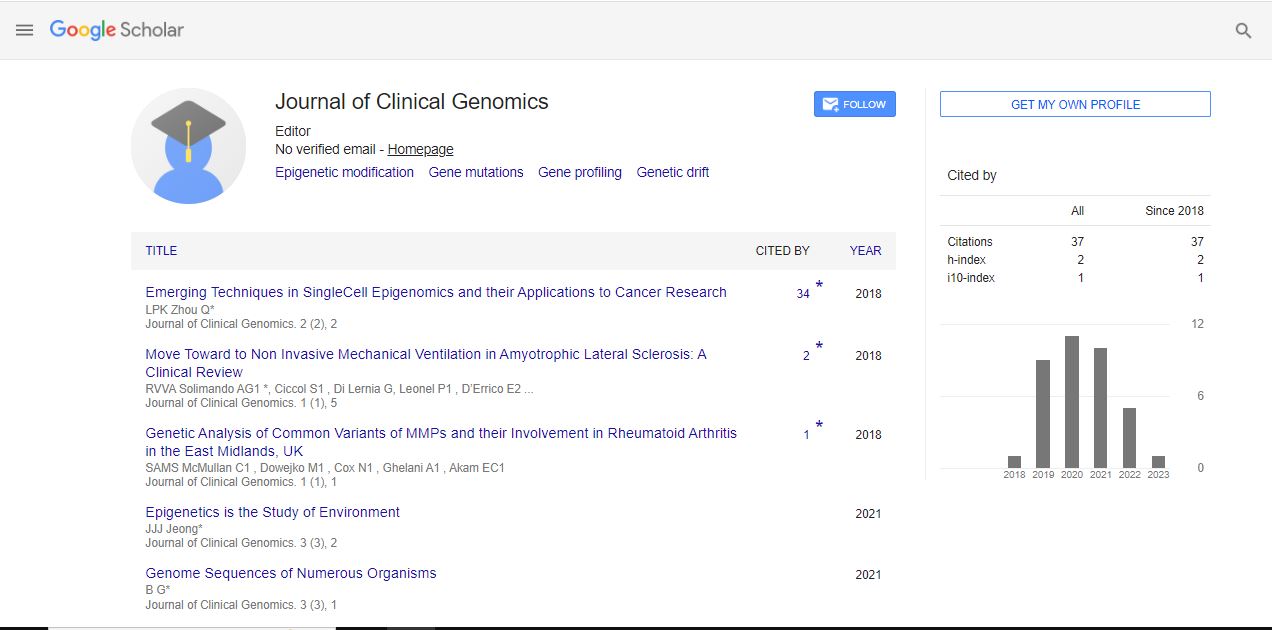Opinion Article, J Chromatography Res Vol: 6 Issue: 2
Affinity Chromatography: Bio Molecular Purification and Analysis
Bartnicki Kowalska*
1Department of Chromatography, University of Jagiellonian, Krakow, Poland
*Corresponding Author: Bartnicki Kowalska,
Department of Chromatography,
University of Jagiellonian, Krakow, Poland
E-mail: kowalska.b@gmail.com
Received date: 02 June, 2023, Manuscript No. JCGR-23-107798;
Editor assigned date: 05 June, 2023, PreQC No. JCGR-23-107798 (PQ);
Reviewed date: 19 June, 2023, QC No. JCGR-23-107798;
Revised date: 26 June, 2023, Manuscript No. JCGR-23-107798 (R);
Published date: 06 July, 2023, DOI: 10.4172/JCGR.1000061.
Citation: Kowalska B (2023) Affinity Chromatography: Bio Molecular Purification and Analysis. J Chromatography Res 6:2.
Description
Affinity chromatography is an effective method used to purify and analyze biomolecules based on their specific interactions with immobilized compounds on a solid support. First introduced in the 1960s, this method has revolutionized in the field of biochemistry and has become an indispensable equipment in various disciplines, including biotechnology, pharmaceutical research, and molecular biology.
Principles of affinity chromatography
The fundamental principle of affinity chromatography is based on the selective adhering between a target biomolecule and a specific ligand immobilized on a structure of solids. The ligand can be an enzyme, antibody, receptor, nucleic acid, or any other molecule that exhibits a high affinity and specificity for the target molecule. The solid matrix is typically composed of agarose, sepharose, or other porous materials, which provide a large surface area for ligand immobilization.
The purification process involves experiencing a complicated combination of biomolecules (for example cell lysate or culture medium) through the association surface, allowing the target molecule to selectively bind to the nerve immobilized. Non-specific molecules are removed and the limited objective is subsequently obtained from a column under mild conditions that do not interrupt the binding interaction. This results in a highly pure and concentrated sample of the target biomolecule, prepared for further examination or downstream applications.
Applications of affinity chromatography
Protein purification: Affinity chromatography is widely used to purify proteins with high specificity and produce. It is particularly effective for isolating recombinant proteins that have been created with affinity tags, such as His-tag, GST-tag, or FLAG-tag, allowing rapid and efficient purification.
Antibody purification: Monoclonal antibodies and other immunoglobulins can be purified by using affinity chromatography columns covered with protein A or protein G ligands, which bind specifically to the constant region of antibodies.
Enzyme purification: Enzymes can be selectively purified by using affinity chromatography with ligands that recognize and bind to the enzyme's dynamic site or specific binding domains.
Nucleic acid purification: DNA and RNA molecules can be purified by using affinity chromatography with complementary oligonucleotide probes immobilized on the matrix, facilitating specific hybridization and purification.
Drug target identification: Affinity chromatography plays an important role in drug discovery by identifying potential drug targets and characterizing their interactions with small molecules or drug candidates.
Advancements in affinity chromatography
In current biochemistry, molecular biology, and biotechnology, affinity chromatography is an essential technique. Its capacity to selectively remove and analyze biomolecules based on certain interactions has increased the comprehension of biological processes and disease mechanisms significantly. From purifying recombinant proteins to identifying drug targets, this technique continues to drive revolutionary discoveries and innovations in the life sciences. As technology continues to evolve, affinity chromatography will certainly endure important equipment in advancing scientific research and enhancing various applications in the healthcare and pharmaceutical industries.
Over the years, significant advancements have been made in the field of affinity chromatography, enhancing its performance, versatility, and efficiency:
High-throughput techniques: Automation and robotics have been integrated into affinity chromatography systems, allowing highthroughput purification and analysis of biomolecules. This has accelerated research in proteomics and genomics, enabling the study of large sets of proteins and nucleic acids simultaneously.
Multimodal chromatography: Multi modal affinity chromatography combines different types of ligands on a single matrix, enabling the purification of complex bio-molecular combinations with high selectivity and resolution.
Engineered ligands: Scientists have developed novel ligands with enhanced specificity and affinity for various biomolecules. These engineered ligands allow the purification of target molecules that were previously challenging to isolate.
Site-specific labeling: Site-specific labeling of biomolecules with characteristics of affection has improved purification efficiency and minimized the risk of altering the molecule's function or structure.
Affinity chromatography in proteomics: It is widely used in proteomics research to identify protein-protein interactions, posttranslational modifications, and protein-ligand interactions.
 Spanish
Spanish  Chinese
Chinese  Russian
Russian  German
German  French
French  Japanese
Japanese  Portuguese
Portuguese  Hindi
Hindi 